Brace for the big baby boom
Many believed that recurring lockdowns and working from home restrictions would lead to a baby boom, but it’s not in sight – yet. John Lindeman explains why, and what’s around the corner.
It seems natural that periodically locking down couples at home and closing public entertainment and recreation facilities would lead to more babies being born, but according to the stats, our birth-rate is falling, and the rate of decline has recently worsened.
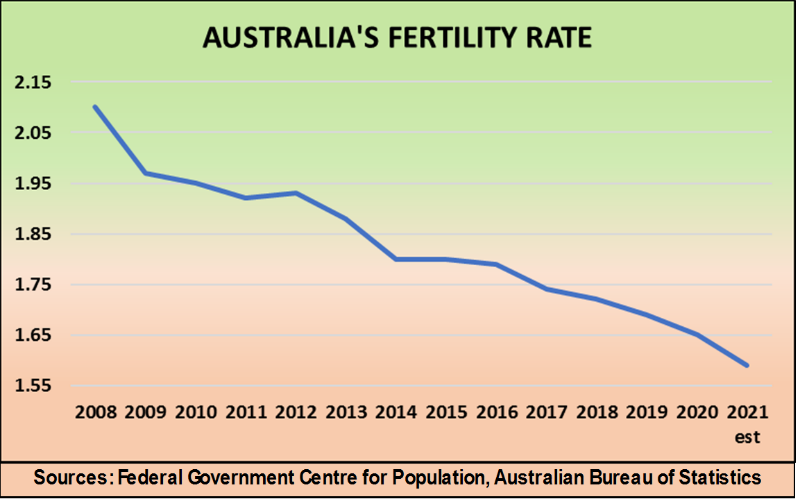
As this graph shows, the drop in our fertility rate has accelerated as fewer women choose to have babies.
The reason for this decline is that people tend to put off having babies during uncertain times. Birth-rates drop during recessions, famines, wars and periods of economic, social or political turmoil, and that’s precisely where we are right now.
You can see in these two graphs how the same trend played out during the last periods of unrest and uncertainty that our nation experienced – the two World Wars.
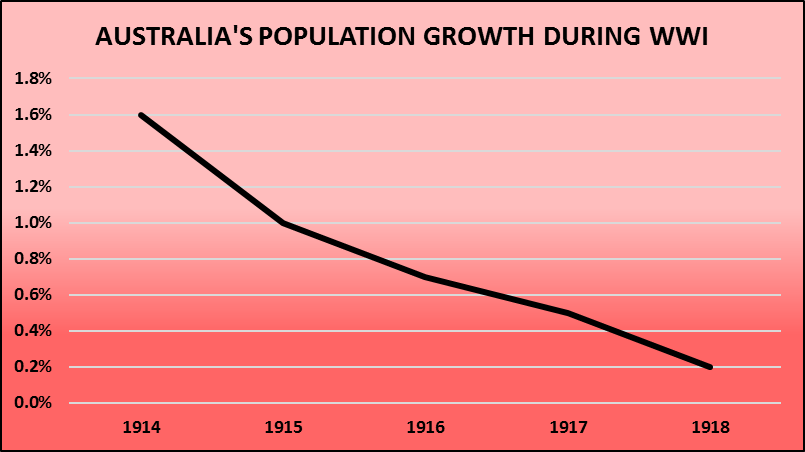
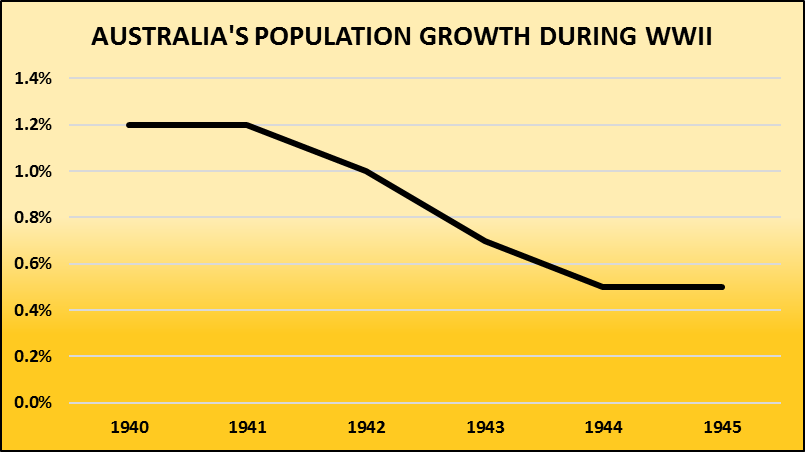
Most of our population growth in the years before the First and Second World Wars came from births, but as the war years went on fewer couples decided to have babies, even though the opportunities to do were still there, especially when soldiers periodically returned home on leave.
Birth rates fall during times of crisis
This trend was very similar to the current decline. Although people may have more opportunities than ever to make babies, they are not motivated to do so, deciding that it’s better to wait until conditions improve.
Everyone hopes that the current crisis will not be as severe or last as long as those wars did. Although there are no guns or bombs to contend with, and the enemy comes in the form of a tiny virus, the result is much the same – fewer people are having babies.
The real question is what occurred after each of world wars, when all that uncertainty and inaction was replaced by optimism and enthusiasm? And the answer is that we had huge baby booms.
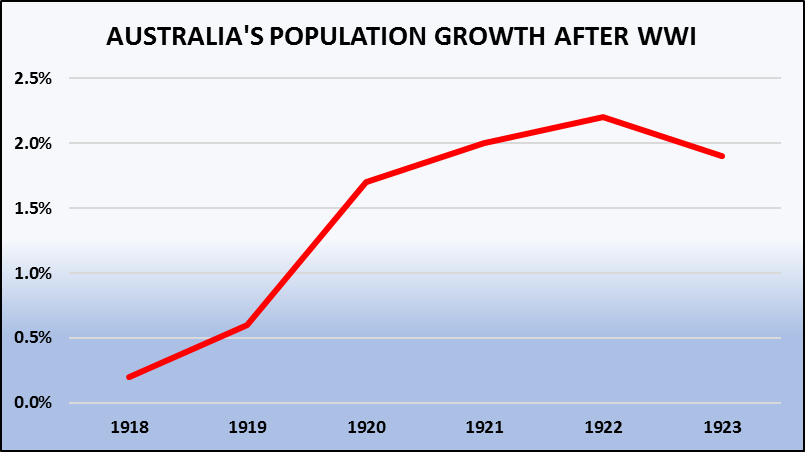

After each war ended, people started having babies in larger numbers than ever before, and the population growth rate reached record levels.
An entire generation of Australians, now known as baby boomers. was born as households swelled in size to include three, four or even more children.

This crisis will be overcome

Past pandemics have always been conquered, whether by strict immunisation protocols or the development of new, more powerful vaccines. The Spanish flu pandemic caused an estimated twenty to fifty million deaths worldwide from 1917 to 1920, but now we accept one annual flu shot as an adequate defence against all forms of influenza.
Another virus, called poliomyelitis killed over one thousand Aussie children in the post war years and tens of thousands were left permanently paralysed. Not only was an effective Salk vaccine developed in the 1950’s, but the improved Sabin version is now administered orally, on a spoon or a sugar cube. There’s no need for a needle, and Australia has been officially polio free since 2000.
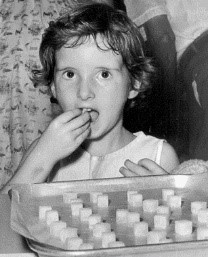
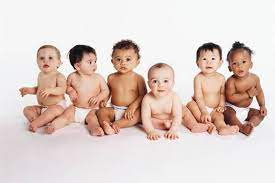
We have nothing to fear and everything to hope for regarding the future as far as COVID-19 is concerned as well. When the virus is finally behind us and confidence returns, we are very likely to experience another baby boom, just as we did when those past crises ended.
The baby boom could lead to a housing boom
The graphs show that Australian capital city house prices rose by over fifty per cent in the four years after the First World War ended, as our population growth rate soared. In the six years following the end of the Second World War, house prices shot up by an incredible one hundred and seventy per cent as the demand for housing dramatically increased.
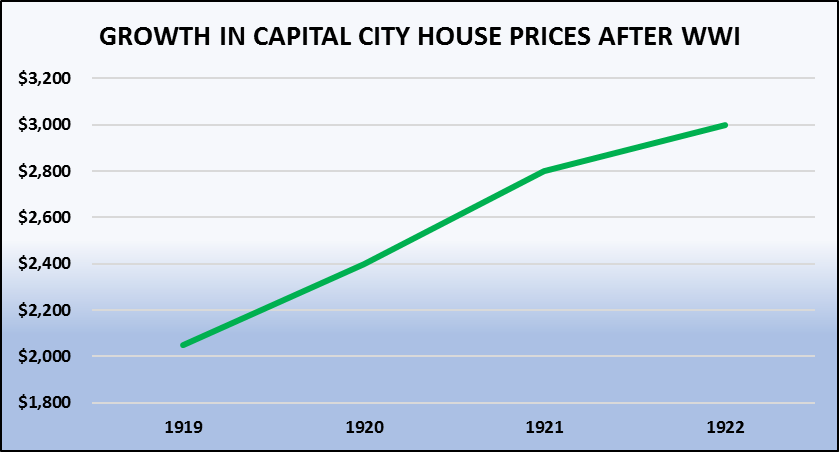
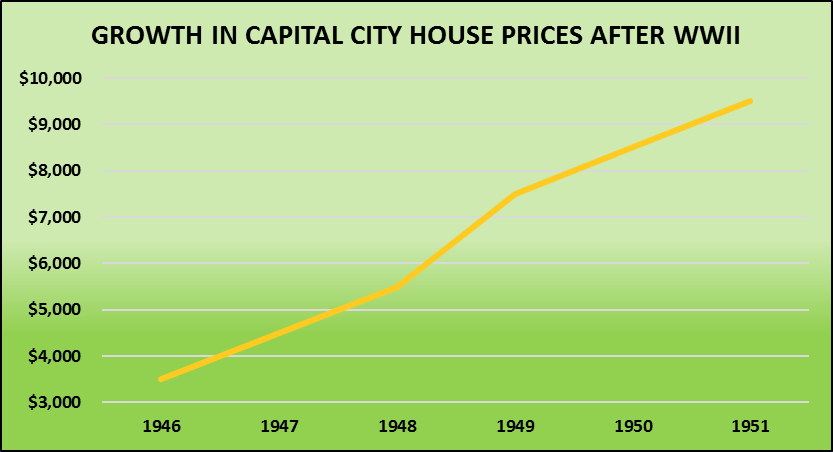
Not only were people having more babies, but we also welcomed refugees and migrants from war ravaged and economically devasted countries, resulting in the highest population growth rates we have ever experienced as a nation, before or since.
What this analysis is telling us is that when all the current uncertainty is finally over, another baby boom will begin and large numbers of overseas arrivals will migrate here as well. Then we can confidently expect the housing market to boom again as well.
Sources
Federal Government Centre for Population
A century of population change in Australia, Australian Yearbook 2001
Time Series Profiles, Australian Bureau of Statistics
Australian National Library Trove facility and Mitchell Library archives
House Price Indexes: Eight Capital Cities, 6416.0 Australian Bureau of Statistics
Housing Market Prediction Solution, Property Power Partners
Mastering the Australian Housing Market, John Lindeman, Wileys